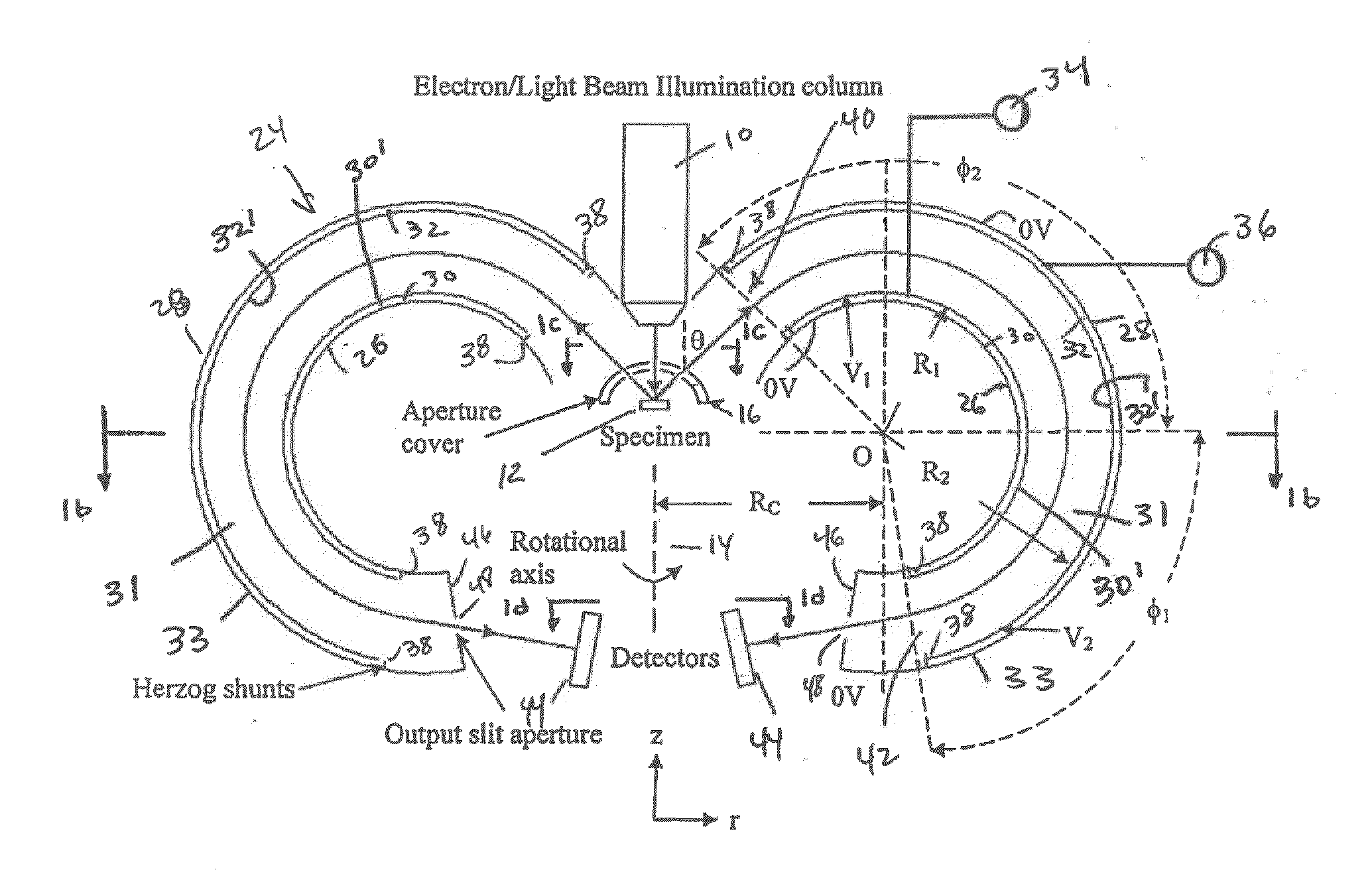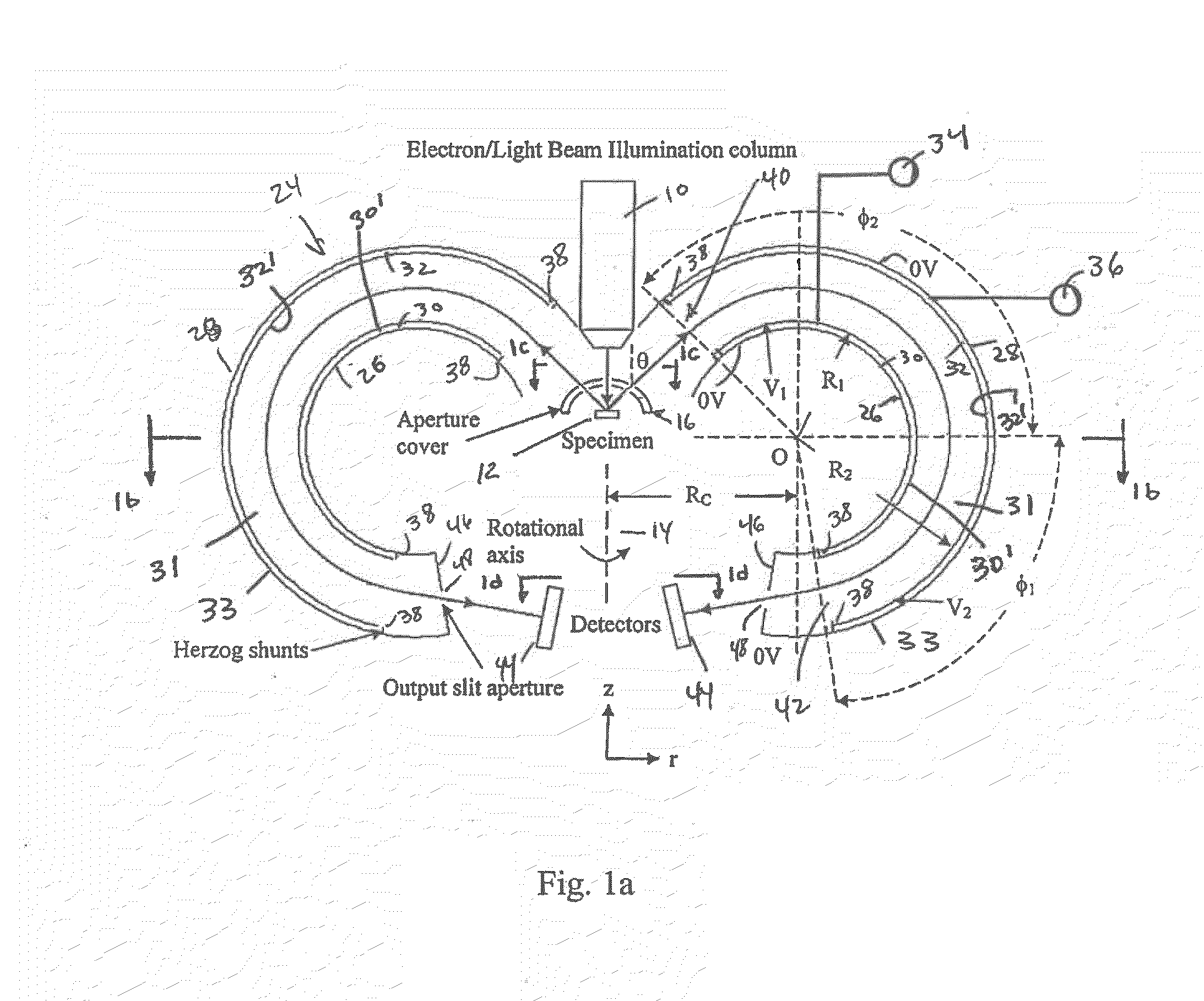Electrostatic electron spectrometry apparatus
a technology of electron spectrometry and electron spectrometry, which is applied in the field of electrostatic electron spectrometry apparatus, can solve the problems of difficult to achieve, difficult to use cma for many applications, and inferior energy resolution of 2 radian collection spectrometers, etc., to achieve the effect of improving energy resolution, shortening trajectory run time and increasing complexity
- Summary
- Abstract
- Description
- Claims
- Application Information
AI Technical Summary
Benefits of technology
Problems solved by technology
Method used
Image
Examples
Embodiment Construction
[0035]Referring to FIGS. 1a-1d, an electron spectrometry apparatus according to the present invention includes an emitter 10 which emits particles such as electrons or photons. Emitter 10 is arranged to bombard the surface of a specimen 12 with particles in order to generate a population of scattered electrons. The specimen may be a piece of semiconductor material, a metallic body, an organic sample or the like. Specimen 12 is preferably positioned on a platform, which is rotated about a rotation axis 14 in a clockwise or a counter-clockwise direction. Preferably, the beam of particles emitted from emitter 10 travel in a direction that is generally aligned with rotation axis 14. As is well known, the bombardment of specimen 12 causes the generation of scattered electrons from specimen 12 which travel in all directions. In order to select the direction of scattered electrons a cover 16 is placed over specimen 12. Specifically, cover 16 includes an annular slit 18 the width of which i...
PUM
 Login to View More
Login to View More Abstract
Description
Claims
Application Information
 Login to View More
Login to View More - R&D
- Intellectual Property
- Life Sciences
- Materials
- Tech Scout
- Unparalleled Data Quality
- Higher Quality Content
- 60% Fewer Hallucinations
Browse by: Latest US Patents, China's latest patents, Technical Efficacy Thesaurus, Application Domain, Technology Topic, Popular Technical Reports.
© 2025 PatSnap. All rights reserved.Legal|Privacy policy|Modern Slavery Act Transparency Statement|Sitemap|About US| Contact US: help@patsnap.com



